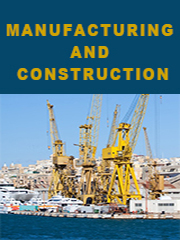Report overview
IR spectroscopy is the analysis of infrared light interacting with a molecule. This can be analyzed in three ways by measuring absorption, emission and reflection. IR spectroscopy has been a workhorse technique for materials analysis in the laboratory for over seventy years. An infrared spectrum represents a fingerprint of a sample with absorption peaks which correspond to the frequencies of vibrations between the bonds of the atoms making up the material. Because each different material is a unique combination of atoms, no two compounds produce the exact same infrared spectrum. Therefore, IR spectroscopy can result in a positive identification (qualitative analysis) of every different kind of material. In addition, the size of the peaks in the spectrum is a direct indication of the amount of material present. With modern software algorithms, infrared is an excellent tool for quantitative analysis.
This report aims to provide a comprehensive presentation of the global market for IR Spectroscopy Equipment, with both quantitative and qualitative analysis, to help readers develop business/growth strategies, assess the market competitive situation, analyze their position in the current marketplace, and make informed business decisions regarding IR Spectroscopy Equipment. This report contains market size and forecasts of IR Spectroscopy Equipment in global, including the following market information:
Global IR Spectroscopy Equipment Market Revenue, 2018-2023, 2024-2029, ($ millions)
Global IR Spectroscopy Equipment Market Sales, 2018-2023, 2024-2029, (K Units)
Global top five IR Spectroscopy Equipment companies in 2022 (%)
The global IR Spectroscopy Equipment market was valued at US$ 208.1 million in 2022 and is projected to reach US$ 258.6 million by 2029, at a CAGR of 3.2% during the forecast period. The influence of COVID-19 and the Russia-Ukraine War were considered while estimating market sizes.
Global IR Spectroscopy Equipment key players include Thermo Fisher Scientific, Foss, ABB, etc. Global top three manufacturers hold a share over 40%.
North America is the largest market, with a share about 50%, followed by Europe, and Japan, both have a share over 35 percent.
In terms of product, Fourier Transform Infrared Spectrometer is the largest segment, with a share over 55%. And in terms of application, the largest application is Pharmaceutical Industry, followed by Chemical Industry, etc.
We surveyed the IR Spectroscopy Equipment manufacturers, suppliers, distributors and industry experts on this industry, involving the sales, revenue, demand, price change, product type, recent development and plan, industry trends, drivers, challenges, obstacles, and potential risks.
Total Market by Segment:
Global IR Spectroscopy Equipment Market, by Type, 2018-2023, 2024-2029 ($ Millions) & (K Units)
Global IR Spectroscopy Equipment Market Segment Percentages, by Type, 2022 (%)
Fourier Transform Infrared Spectrometer
Near-Infrared Spectrometer
Others
Global IR Spectroscopy Equipment Market, by Application, 2018-2023, 2024-2029 ($ Millions) & (K Units)
Global IR Spectroscopy Equipment Market Segment Percentages, by Application, 2022 (%)
Pharmaceutical
Food and Agriculture
Chemical
Polymer
Oil and Gas
Others
Global IR Spectroscopy Equipment Market, By Region and Country, 2018-2023, 2024-2029 ($ Millions) & (K Units)
Global IR Spectroscopy Equipment Market Segment Percentages, By Region and Country, 2022 (%)
North America
US
Canada
Mexico
Europe
Germany
France
U.K.
Italy
Russia
Nordic Countries
Benelux
Rest of Europe
Asia
China
Japan
South Korea
Southeast Asia
India
Rest of Asia
South America
Brazil
Argentina
Rest of South America
Middle East & Africa
Turkey
Israel
Saudi Arabia
UAE
Rest of Middle East & Africa
Competitor Analysis
The report also provides analysis of leading market participants including:
Key companies IR Spectroscopy Equipment revenues in global market, 2018-2023 (Estimated), ($ millions)
Key companies IR Spectroscopy Equipment revenues share in global market, 2022 (%)
Key companies IR Spectroscopy Equipment sales in global market, 2018-2023 (Estimated), (K Units)
Key companies IR Spectroscopy Equipment sales share in global market, 2022 (%)
Further, the report presents profiles of competitors in the market, key players include:
Thermo Fisher Scientific
PerkinElmer
Shimadzu
Bruker
Agilent Technologies
ABB
Foss
JASCO
MKS Instruments
Sartorius
B?CHI Labortechnik
Beijing Beifen-Ruili Analytical Instrument
Tianjin Gangdong
FPI Group
Outline of Major Chapters:
Chapter 1: Introduces the definition of IR Spectroscopy Equipment, market overview.
Chapter 2: Global IR Spectroscopy Equipment market size in revenue and volume.
Chapter 3: Detailed analysis of IR Spectroscopy Equipment manufacturers competitive landscape, price, sales and revenue market share, latest development plan, merger, and acquisition information, etc.
Chapter 4: Provides the analysis of various market segments by type, covering the market size and development potential of each market segment, to help readers find the blue ocean market in different market segments.
Chapter 5: Provides the analysis of various market segments by application, covering the market size and development potential of each market segment, to help readers find the blue ocean market in different downstream markets.
Chapter 6: Sales of IR Spectroscopy Equipment in regional level and country level. It provides a quantitative analysis of the market size and development potential of each region and its main countries and introduces the market development, future development prospects, market space of each country in the world.
Chapter 7: Provides profiles of key players, introducing the basic situation of the main companies in the market in detail, including product sales, revenue, price, gross margin, product introduction, recent development, etc.
Chapter 8: Global IR Spectroscopy Equipment capacity by region & country.
Chapter 9: Introduces the market dynamics, latest developments of the market, the driving factors and restrictive factors of the market, the challenges and risks faced by manufacturers in the industry, and the analysis of relevant policies in the industry.
Chapter 10: Analysis of industrial chain, including the upstream and downstream of the industry.
Chapter 11: The main points and conclusions of the report.
